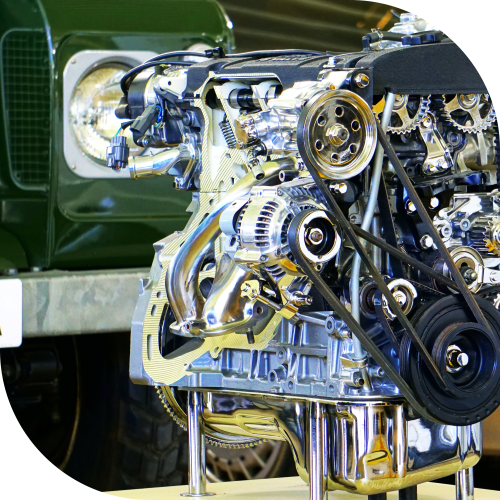
MANUFACTURING INDUSTRY
Today's advances in computer technology allow manufacturers to do more in less time. Now thousands of items can be made in minutes. Computer technology can be used to assemble, test and monitor production. Every year, technology continues to make manufacturing more efficient, faster and more cost-effective. However, automation is also eliminating many manufacturing jobs, leaving skilled employees out of work.
EDUCATION INDUSTRY
The education industry consists of schools, colleges, universities, and various private institutions. The education industry provides its students with the knowledge and skills to adapt to an ever-changing world of work. The industry is made up of a growing number of organisations that strive to provide lifelong learning to their customers. The education sector can be broadly classified as primary education, secondary education, higher education, and vocational education. The education industry is crucial to the workforce capacity of all other industries, but it also faces unique workforce development challenges. With its responsibility to train the current workforce and prepare future generations for work and life, the education sector is subject to intense public and political scrutiny and frequent waves of change and revision Politics.

HEALTHCARE INDUSTRY
On the horizon looms the new world of technology that is growing at a geometric pace and promises fantastic medical advances in genetics and molecular biology, pharmacology, medicine and surgery, diagnostic tools, physiological monitoring and robotics. These and the computing that runs through all of these technologies promise tremendous benefits and value. These new developments often put the CEO in an investment dilemma between managing costs and buying something that will improve quality and reduce (or contain) future costs (value enhancement).


RETAIL INDUSTRY
In an increasingly competitive landscape, players in the retail industry must compete in many ways. Consumers today want top-notch customer service and an integrated shopping experience. The rise of omnichannel commerce is a confirmation of this. Consumers want to combine the benefits of traditional shopping with the convenience of using modern technology. Consumers can now shop online using their tablets or smartphone. They could also be on the main street in a brick and mortar store. Consumer appetite for retail sales remained robust. As such, retailers now need to provide a smooth and hassle-free consumer experience to stay competitive.
CONSTRUCTION INDUSTRY
Construction is an industry that includes the erection, maintenance and repair of buildings and other immovable structures, as well as the construction of roads and service facilities that are an integral part of the structures and essential to their use. In its most widely used context, construction covers the processes involved in the delivery of buildings, infrastructure and industrial facilities, and associated activities until the end of their life. Construction includes structural additions and alterations but excludes the construction of movable structures such as trailers and ships. It usually starts with planning, financing, design, execution, construction and also covers repairs, maintenance and improvement works.


AUTOMOTIVE INDUSTRY
The automotive industry, all such businesses and activities related to the manufacture of motor vehicles, including most components, such as engines and bodies, but excluding tires, batteries and fuel. The industry's main products are passenger cars and light trucks, including pickup trucks, vans and sport utility vehicles. Commercial vehicles (i.e. delivery trucks and large haul trucks, often referred to as semi-trailers), while important to the industry, are secondary.
FOOD INDUSTRY
India is the second-largest food producer in the world, and it has the potential to become the largest food producer in the entire world. The food industry in India includes milk and dairy products, plantations, alcoholic beverages, vegetables and fruits, fish, poultry and meat, grain processing, chocolates and confectionery.
India's food industry exported products worth about US$5.8 billion in 1998, while total world food exports amounted to US$438 billion. This shows that although India is one of the largest food producers in the world, it only accounted for 1.5% of the international food trade in 1998.


REAL ESTATE INDUSTRY
The real estate sector is one of the most recognized sectors globally. It comprises four sub-sectors – housing, retail, hospitality and trade. The growth of this sector is well complemented by the growth of the business environment and the demand for office space as well as urban and semi-urban housing. The construction industry ranks third among the 14 major sectors in terms of direct, indirect and induced effects in all sectors of the economy.
In India, the real estate sector is the second generator of employment, after the agricultural sector. This sector is also expected to attract more non-resident Indian (NRI) investment, both short and long term. Bengaluru is expected to be the most preferred property investment destination for NRIs, followed by Ahmedabad, Pune, Chennai, Goa, Delhi and Dehradun.


